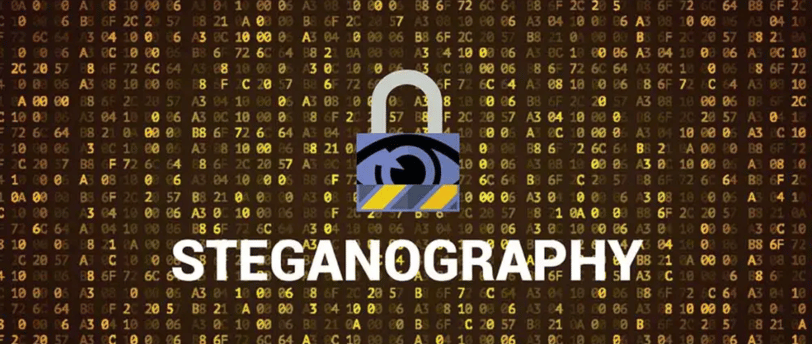The Art of Steganography: Hiding Data in Plain Sight
Steganography is the technique of hiding data within an ordinary, nonsecret file or message to avoid detection; the hidden data is then extracted at its destination. Steganography use can be combined with encryption as an extra step for hiding or protecting data.
12/18/20233 min read


Steganography, the art of concealing information within seemingly innocent files or messages, has been used for centuries as a means of covert communication. By embedding data within ordinary files, steganography allows users to avoid detection and ensure the privacy and security of their information. In this blog post, we will explore the concept of steganography, its history, and its modern-day applications.
What is Steganography?
Steganography, derived from the Greek words "steganos" meaning covered or concealed, and "graphein" meaning writing, is the practice of hiding information within other data in such a way that it goes unnoticed. Unlike encryption, which focuses on making the message unreadable, steganography aims to make the existence of the message itself unknown.
The technique involves embedding the hidden data within an ordinary file or message, such as an image, audio file, or even a text document. By altering the least significant bits of the cover file, steganography allows for the insertion of additional information without significantly changing the appearance or size of the file.
A Brief History of Steganography
Steganography has a long and fascinating history, dating back to ancient times. One of the earliest recorded instances of steganography can be found in Herodotus' Histories, where the story of Histiaeus, the tyrant of Miletus, is recounted. Histiaeus used a slave's shaved head as a medium to tattoo a secret message, which was revealed when the slave's hair had grown back.
In the medieval era, steganography was often employed to transmit secret messages during times of war. One notable example is the use of invisible ink, where messages were written using special substances that only became visible when exposed to specific chemicals or heat sources.
With the advent of digital technology, steganography has evolved to take advantage of the vast amount of data that can be hidden within digital files. Modern steganography techniques use the binary nature of digital data to embed information within images, audio files, videos, and even network protocols.
Applications of Steganography
Steganography finds applications in various fields, ranging from military and intelligence operations to digital forensics and personal privacy. Let's explore some of the most common applications of steganography:
1. Covert Communication
Steganography provides a means for covert communication, allowing individuals or groups to exchange information without arousing suspicion. By hiding messages within innocent-looking files or messages, steganography enables confidential communication in plain sight.
In espionage and intelligence operations, steganography can be used to transmit sensitive information without raising any red flags. By embedding the data within seemingly harmless files, such as images or audio recordings, spies can exchange information without attracting attention or detection.
2. Digital Watermarking
Steganography is also employed in the field of digital watermarking, where it is used to embed copyright information or ownership details within multimedia files. By subtly altering the pixels or data within an image or audio file, steganography can add an invisible watermark that can be later detected and verified.
This technique is commonly used by photographers, musicians, and other content creators to protect their intellectual property from unauthorized use or distribution. Digital watermarks can be used to prove ownership, track unauthorized copies, or provide additional information about the content.
3. Data Protection and Encryption
Steganography can be combined with encryption to provide an extra layer of security for sensitive data. By encrypting the hidden message before embedding it within the cover file, steganography ensures that even if the hidden data is discovered, it remains unreadable without the decryption key.
This combination of steganography and encryption can be particularly useful in situations where the mere presence of encrypted data might raise suspicion. By hiding the encrypted message within an innocuous file, such as a holiday photo or a casual email, users can protect their data while avoiding unwanted attention.
4. Digital Forensics
Steganography plays a crucial role in digital forensics, the process of investigating and analyzing digital evidence. In criminal investigations, steganography can be used to conceal illegal activities, hide evidence, or communicate covertly. Forensic analysts employ specialized tools and techniques to detect and extract hidden data from digital files.
By analyzing the least significant bits, color variations, or statistical anomalies within a file, forensic experts can identify the presence of steganography. This helps in uncovering hidden messages, identifying criminals, and providing crucial evidence in legal proceedings.
The Future of Steganography
As technology continues to advance, steganography is likely to evolve and become more sophisticated. With the increasing use of artificial intelligence and machine learning algorithms, new techniques may emerge to hide information within digital media in ways that are even harder to detect.
Furthermore, as the need for secure communication and data protection grows, steganography may find new applications in fields such as cybersecurity, secure messaging, and privacy-preserving technologies. The ability to hide information within everyday files will continue to be a valuable tool for individuals and organizations seeking to protect their sensitive data.
Conclusion
Steganography, the art of hiding data within ordinary files or messages, offers a powerful means of covert communication and data protection. With its rich history and diverse applications, steganography continues to be a fascinating field of study. Whether used for espionage, digital watermarking, or personal privacy, the ability to hide information in plain sight remains an essential tool in our increasingly digital world.
